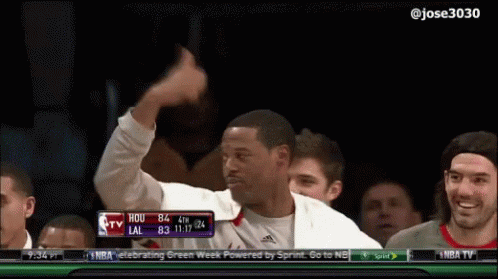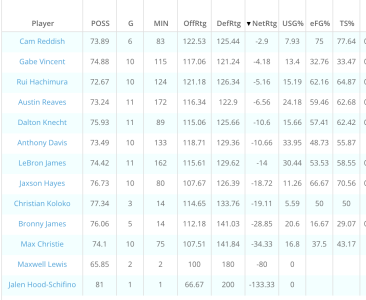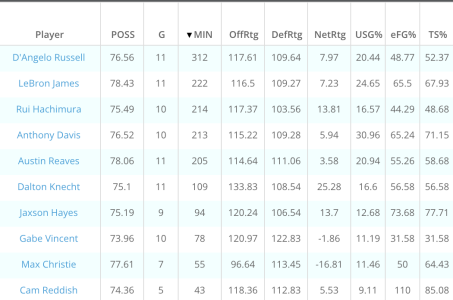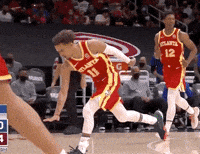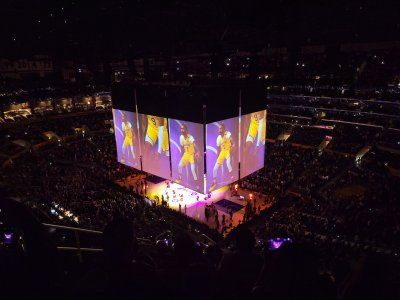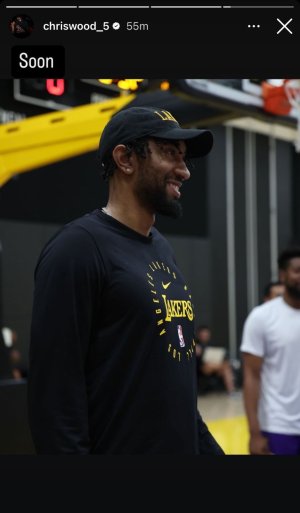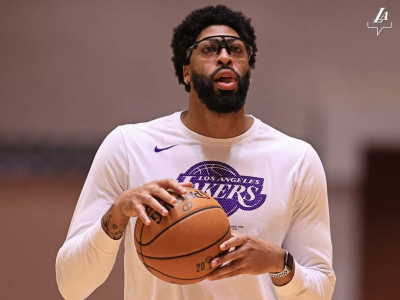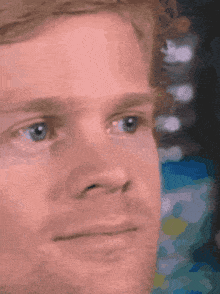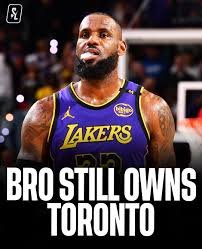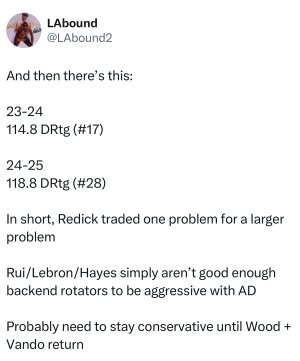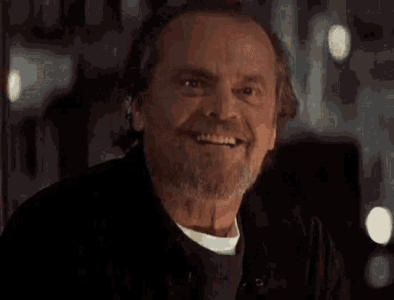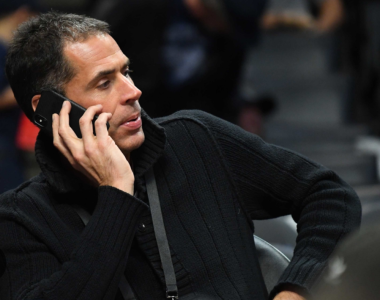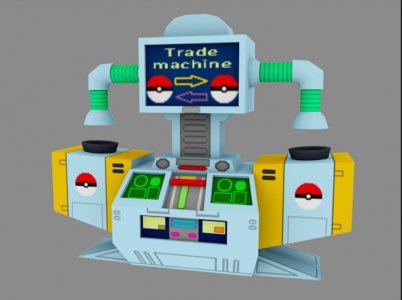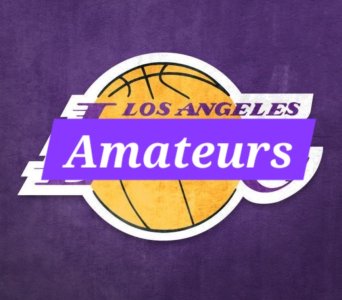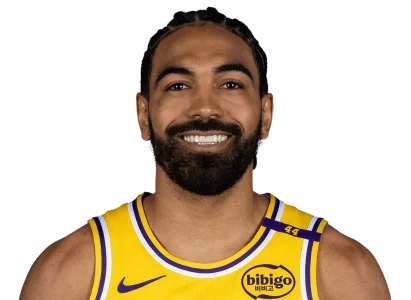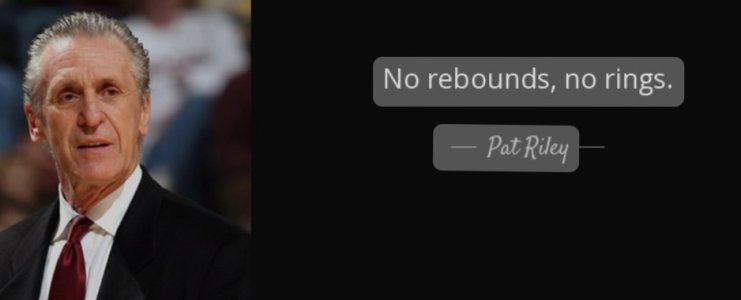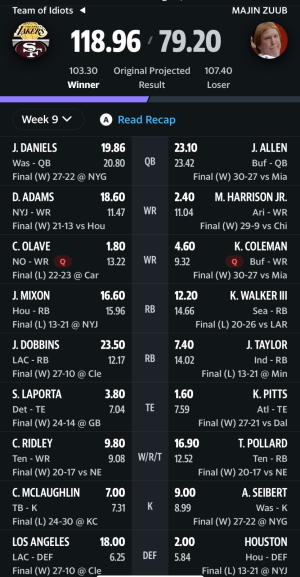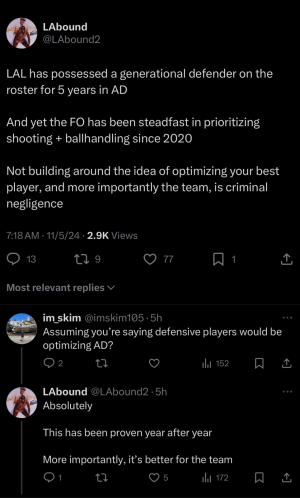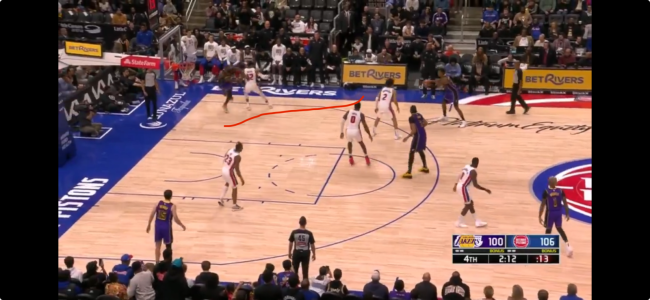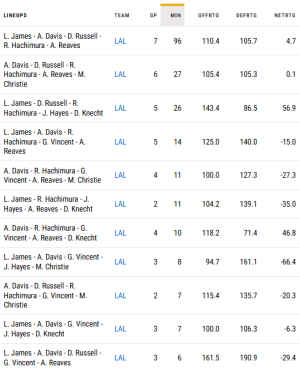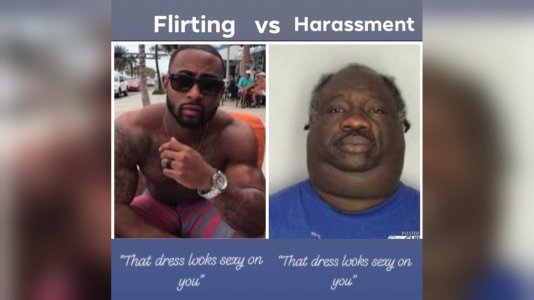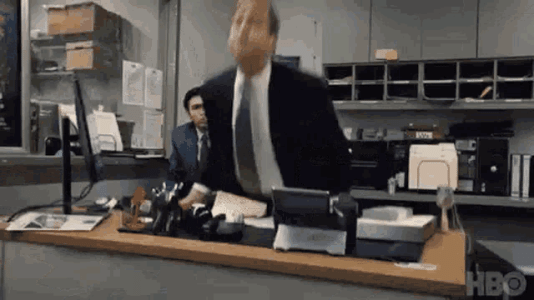Are the Lakers too reliant on LeBron James? Plus, 9 other early-season takeaways
Somehow, someway, LeBron James remains the Los Angeles Lakers’ most important player in his 21st season.
The on-off numbers are staggering: The Lakers (5-5) are 24.4 points per 100 possessions better with James on the floor than off of it, according to NBA.com. That figure was at 34.1 points per 100 possessions before Sunday’s 116-110 home win over the Portland Trail Blazers, a game in which James didn’t play due to a left calf contusion.
The over-reliance on James has been a prominent issue for the Lakers in four of the five seasons since James and Anthony Davis teamed up, but never to this extent — though it’s early, of course. The Lakers have been outscored by 80 points in the 175 minutes James has been off the floor. The team’s net ratings when James is on and off the floor paint a similar picture: Los Angeles is outscoring opponents by 4.4 points per 100 possessions with James in the game and is being outscored by 20.0 points per 100 possessions when he is on the bench.
The Lakers are markedly worse on both ends of the floor without James — 15.4 points per 100 possessions worse offensively and 9.1 points per 100 possessions worse defensively — but their offense is the larger problem of the two. Perhaps coach Darvin Ham’s decision to bring Austin Reaves off the bench (more on that below) can solve some of the team’s non-LeBron offensive issues. But the Lakers’ increased depth and continuity from last season hasn’t translated to them needing James any less this campaign.
James has a burst that he hadn’t displayed since before his left foot injury last February. He’s shooting a career-high 56.7 percent from the field and a career-best 84.7 percent within three feet of the rim. He’s regained his 3-point stroke, bumping it up to 34.8 percent after he made just 32.1 percent last season. He’s also been great in the clutch, ranking third in points (29), first in field goals made (11) and tied for 13th in plus-minus (plus-14) leaguewide in situations when the game’s margin is within five points with five or fewer minutes left in the fourth quarter.
James has been a minus defensively, often conserving his energy as players whiz by him on drives and behind him for offensive rebounds. But that’s to be expected for a soon-to-be-39-year-old.
Moving forward, the only real concern with James is his minutes load. Plans to keep him on a minutes restriction to preserve his energy lasted all of one game. Since then, James has logged at least 32 minutes in each game, except for the 27 minutes he played in a 34-point loss to the Rockets. Sunday’s break from action was much-needed and could allow him to begin the team’s easier upcoming stretch of games in a strong way.
Here are nine other takeaways from the first 10 games of the Lakers’ season.
1. The AD discourse is misguided
Few players in the NBA swing the national conversation after a subpar performance quite like Davis. His scoreless second half in LA’s season-opening loss to the Denver Nuggets led to weeks of head-scratching debate about his offensive aggression and consistency. The hand-wringing may have been amplified by the game’s timing; it was opening night and one of the only two games to discuss. But most of the discourse tends to trend overly negative, focusing too much on what Davis can’t do and not enough on what he can.
Frank Vogel, the current Phoenix Suns’ head coach and past Lakers head man from 2019 to 2022, said it best before the Oct. 26 Suns-Lakers matchup.
“I still say (Davis has) always been, at his core, a better defensive player than offensive player,” Vogel said. “And that’s where he really dominates the game. His offense has just exploded throughout his career to where he can really do it all. But people need to appreciate his defense.”
Davis is averaging 23.9 points, 12.0 rebounds, 3.7 assists and a career-high (and league-leading) 3.0 blocks this season. His jumper hasn’t fully returned, but he’s making 37.5 percent of his 0.9 3-point attempts per game. (Remember when Ham said he wanted Davis to attempt six 3s per game?) Cam Reddish, Rui Hachimura, Taurean Prince, Christian Wood and Gabe Vincent have made positive defensive contributions, but the Lakers’ defense largely functions because of Davis’ singular brilliance.
Davis may not be the same offensive force as Nikola Jokić, Joel Embiid or Giannis Antentokounmpo, but he’s arguably the best defender in the world, which should count for more than it seems it does. He’s bounced back since opening night, and aside from the occasional offensive lull, he’s been excellent this season.
2. Reaves’ new role
The Summer of Austin Reaves created sky-high expectations for the third-year guard. So far, Reaves has yet to live up to them, to the extent that Ham moved him out of the starting lineup earlier this week.
Reaves’ up-and-down play is somewhat understandable. He’s visibly been fatigued after a deep playoff run and a summer with Team USA. His legs just haven’t been there, with one or two shots seemingly falling short each game. His past trademark efficiency has dipped. He’s been more of a minus than a plus defensively. He hasn’t made as many of the extra winning plays as he has in the past.
At the same time, the Lakers heavily invested in Reaves this summer, touting him as a franchise cornerstone (and, as Ham put it, a future All-Star). Abandoning his position as the team’s third option in the starting unit this quickly is surprising. The Lakers can frame it as a “realignment,” as Ham told reporters after Friday’s win in Phoenix, but it’s a demotion. Entering the season, the notion of Reaves ever coming off the bench would’ve been laughable.
Through two games, it appears the Lakers are attempting a half-measure to fix the struggling backcourt combination of Reaves and D’Angelo Russell. The duo was clashing in the starting lineup, to an extent, given their overlapping strengths. In the two games since the lineup change, a clear dynamic has emerged: Russell starts, but Reaves closes. Against the Suns, Reaves played the entire fourth quarter as Russell watched from the bench. In Sunday’s win over Portland, Reaves replaced Russell with the closing group at the 5:02 mark of the fourth quarter. That is, on some level, an admission that the Lakers are still higher on Reaves than Russell in the game’s most important minutes.
It’s worth asking why the Lakers don’t just start and close games with Reaves. Russell has outplayed Reaves to start the season, but the gap has been shrinking in recent games, particularly in the scoring and shooting departments. Reaves is good enough to make the bench transition work; the Manu Ginobili comparison Ham uttered Friday is one many around the league have made since Reaves’ breakout. He was a positive off the bench in both games, helping to provide a much-needed spark.
But Reaves is one of three Lakers signed past three seasons – the other two being Davis and Jarred Vanderbilt. Taking him out of the starting lineup still feels like a shortsighted decision that could end up being a long-term mistake.
3. Injuries take a toll – again
For the fourth consecutive season, injuries have derailed the Lakers’ best-laid plans with their playing rotation.
Vanderbilt has missed 10 games. Vincent has missed six. Hacimura has missed four. Prince has missed two. Those aren’t the team’s headliners, but each is a key rotation player who fills a vital role in the regular season. The Lakers have been hit especially hard on the perimeter, where they’ve missed Vanderbilt’s multi-positional utility and Vincent’s point-of-attack doggedness.
Ham has indicated multiple times that Vanderbilt likely would have been in the season-opening starting lineup if healthy and will probably return to that group upon his eventual return. The absence of Vincent, the Lakers’ third guard alongside Russell and Reaves, has been notable, too. On paper, he’s the Lakers’ best perimeter defender among the guards and one of their best high-volume 3-point shooters. That latter skill hasn’t translated yet in the games Vincent has played – he’s made just 1 of his 14 3-point attempts this season – but he’s still a threat from beyond the arc that opposing defenses respect.
There are no obvious replacements for the skill sets Vanderbilt or Vincent provide — though Cam Reddish has done a solid Vanderbilt impression over the past two games. Until they return, Los Angeles’ perimeter defense will be compromised.
4. Some limited early rotation trends
It’s too early to glean much from the Lakers’ lineup decisions. Not only is the 10-game sample size too small, but the Lakers have yet to have the entirety of their projected nine-man rotation available. They’ve only had eight of the nine players available for the first three games of the season, when the rotation was still settling and the group was just starting to craft its identity.
That said, there have been a few notable developments.
- Prince edged out Hachimura for the starting small forward spot in training camp.
- Reddish won the backup wing battle with Max Christie.
- Christian Wood regained his status ahead of Jaxson Hayes after that appeared in doubt during the preseason.
Ham’s early trust in Reddish was surprising, as Reddish had mostly struggled — at least offensively — until his breakout in Phoenix on Friday. Ham has also had a quick trigger with Wood and Hayes defensively.
It’s unclear what a full-strength Lakers rotation looks like. We also may never see it; based on the Lakers’ health track record over the past few seasons, they might always be banged up. But if the Lakers ever get healthy, their rotation will likely consist of James, Davis, Reaves, Russell, Vanderbilt, Hachimura, Prince, Vincent and Wood, with Reddish sprinkling in as the 10th man unless he keeps up his recent play and pushes past Prince.
5. A bigger identity
For as much as the league has shifted to small-ball over the past decade-plus, size will always matter. The 2020 Lakers were champions, in part, because they had the versatility to play several different styles while maintaining size and length at all times.
Through 10 games, it’s clear that the Lakers have been at their best when they’re bigger. I must admit: I was wrong to be skeptical of the Lakers’ plans to deploy lineups with two big men. If anything, those groupings have been one of the few positives this season.
If we look at the Lakers’ frontcourt, and only use lineups with at least one of James or Davis on the floor, here are the results, according to Cleaning the Glass.
Lakers frontcourt combinations
It’s obvious that the bigger frontcourts have succeeded more than the smaller ones. The best, of course, has been the James-Davis-Wood frontcourt. The standout pairing has been James and Wood, with Wood’s shooting capabilities as a floor spacer and in pick-and-pop situations helping to unleash James’ downhill attack.
Several of the Lakers’ issues (defensive rebounding, second-chance points allowed, rim protection) are solved by simply having bigger players on the floor. It’s difficult to grab an offensive rebound when some combination of Davis, Wood, Hachimura and James is clogging the paint. It’s much easier for opponents if one of those players is swapped out for Prince or Reddish, or when Reaves is deployed a three-guard look (which hasn’t happened much yet, in part because of Vincent’s injury).
The Lakers need to lean harder into their identity, even if it means trimming the perimeter rotation.
6. 3-point shooting is a season-defining concern
During the preseason, the Lakers appeared to have finally turned a corner with their 3-point shooting. But that was premature, as they have again been one of the league’s worst shooting teams during the regular season.
It’s almost comical how poorly the Lakers are shooting 3s this season — and, really, for most of the James-Davis era. Currently, they rank 29 in the league in 3s made per game, 30th in 3s attempted per game and 29th in 3-point percentage. Their opponents have made more 3s in every game and shot a better 3-point percentage in all but one.
One stat I often reference: Since 2011 – an arbitrary delineation into the more modern era of 3-point-heavy offenses – every NBA champion has ranked in the top 10 in either 3-point makes, attempts and/or percentage in the regular season (and often top 10 in at least two categories, if not all three). The lone exception is the 2019-20 Lakers, who defied that model by having two top-five players and the league’s best defense. Even so, they benefited from improved postseason shooting, with several players (including James, Davis, Markieff Morris and Rajon Rondo) making a notably higher percentage of their 3s in the Bubble.
This is all to say that the Lakers’ poor 3-point shooting is concerning for their long-term aspirations. They’re not going to win a championship as a bottom-two 3-point shooting team, or even a bottom-10 one. It’s difficult to imagine them shooting any worse than they currently are, but even minimal improvement might not be enough.
Whether that means the Lakers eventually need to make a splashy trade or rejigger the rotation remains to be seen. But their 3-point shooting is one of the defining factors holding them back from currently being considered a title contender along with the likes of Denver, Boston, Milwaukee and Philadelphia, among others.
7. Historically slow starts
The Lakers have trailed by double-digits in the first quarter in seven of their 10 games. They’ve managed to rally to win more than half of those contests (four out of seven), but the slow starts are a troubling trend this team can’t afford to sustain.
Ham tried to address that concern by moving Reaves to the bench, an attempt to diversify the starting group’s offensive attack and bolster its perimeter defense with Reddish in Reaves’ place. But the results have been the same. The starters found themselves behind early against both the Suns and Blazers, forcing LA to rally to win each game.
This is an ongoing situation the Lakers will have to monitor. In theory, Vanderbilt and Vincent return and plug some of the team’s defense and energy holes, with Vanderbilt joining the starting lineup and Vincent resuming his third-guard role. But the slow starts must change for the Lakers to rise above their average start.
8. Wood has fit in well
Those who questioned the Lakers’ decision to sign the well-traveled Wood — myself included — have egg on their face. He’s slid in seamlessly as a backup center and third big.
Wood is excelling in a smaller role, playing his fewest number of minutes, averaging his fewest shot attempts and lowest usage percentage since he became a full-time rotation player in Detroit in 2019-20. He’s strengthened the Lakers’ defensive rebounding, vacuuming up misses when Davis contests shots or is pulled away from the basket. He’s second on the team behind James in plus-minus (plus-28 in 221 minutes) and one of only three Lakers above zero. He and James have formed one of the team’s most effective two-man combinations (the Lakers are plus-77 in their 138 minutes together, the best mark of any Lakers pairing).
Wood’s size and length help make up for his defensive limitations. He can hang with wings if he has enough immediate help on drives. He is a solid shot blocker from the opposite side, especially when following up a Davis challenge with a second aerial attack. The Lakers don’t want him as the last line of defense, but Ham has largely prevented that by using Wood next to Davis and/or Hayes in 73.8 percent of his minutes.
There are still legitimate concerns about how Wood would fare in a playoff series against top contenders like Denver or Boston. He can suffer from tunnel vision (like against Portland) and his defensive effectiveness has been slightly overblown. But those concerns are months away. If he can maintain his effort, focus and activity, he has the talent to exceed expectations.
9. Rui is finding his rhythm
After signing a three-year, $51 million deal this summer, Hachimura appeared to be the favorite to start at small forward and be a key part of the Lakers’ future as a mismatch-destroying, oversized scoring wing. But Hachimura fizzled in training camp and the preseason, relegating him to a smaller-than-expected bench role — until recently.
Since returning from his four-game stint in the league’s concussion protocol, he’s operated more like a rolling big man than a scoring wing than he ever has in his career. He’s been assisted on a career-high 80 percent of his 2-point field goals, a marked increase from his previous high (74 percent in 2020-21).
Ham consistently makes clear publicly that he wants Hachimura to be more aggressive and engaged in other aspects beyond scoring. That was the knock on Hachimura when he arrived with the Lakers and explains why he occasionally found himself out of the main rotation late in the 2022-23 regular season.
The message apparently clicked during his time away this month. He scored 24 points in the Lakers’ blowout loss to the Rockets, mashing his way to the rim. He was an active part of the Lakers’ comeback against the Suns, registering a career-high four steals. Then, he scored 19 points against the Blazers, cutting and positioning himself for deep seals against Portland’s undersized wings and tipping in a couple of teammate misses.
That version of Hachimura provides a level of physicality and athleticism the Lakers desperately need in the frontcourt. There’s a reason why he made such a large impact for them in last season’s playoffs. He might not regain his spot as a starter, but he should play an important role and remain a staple of the closing lineup.



 . 41 minutes. 30 points. 13 rebounds. 6 assists. 1 turnover. 3 blocks. + 17 (
. 41 minutes. 30 points. 13 rebounds. 6 assists. 1 turnover. 3 blocks. + 17 (  )
)






